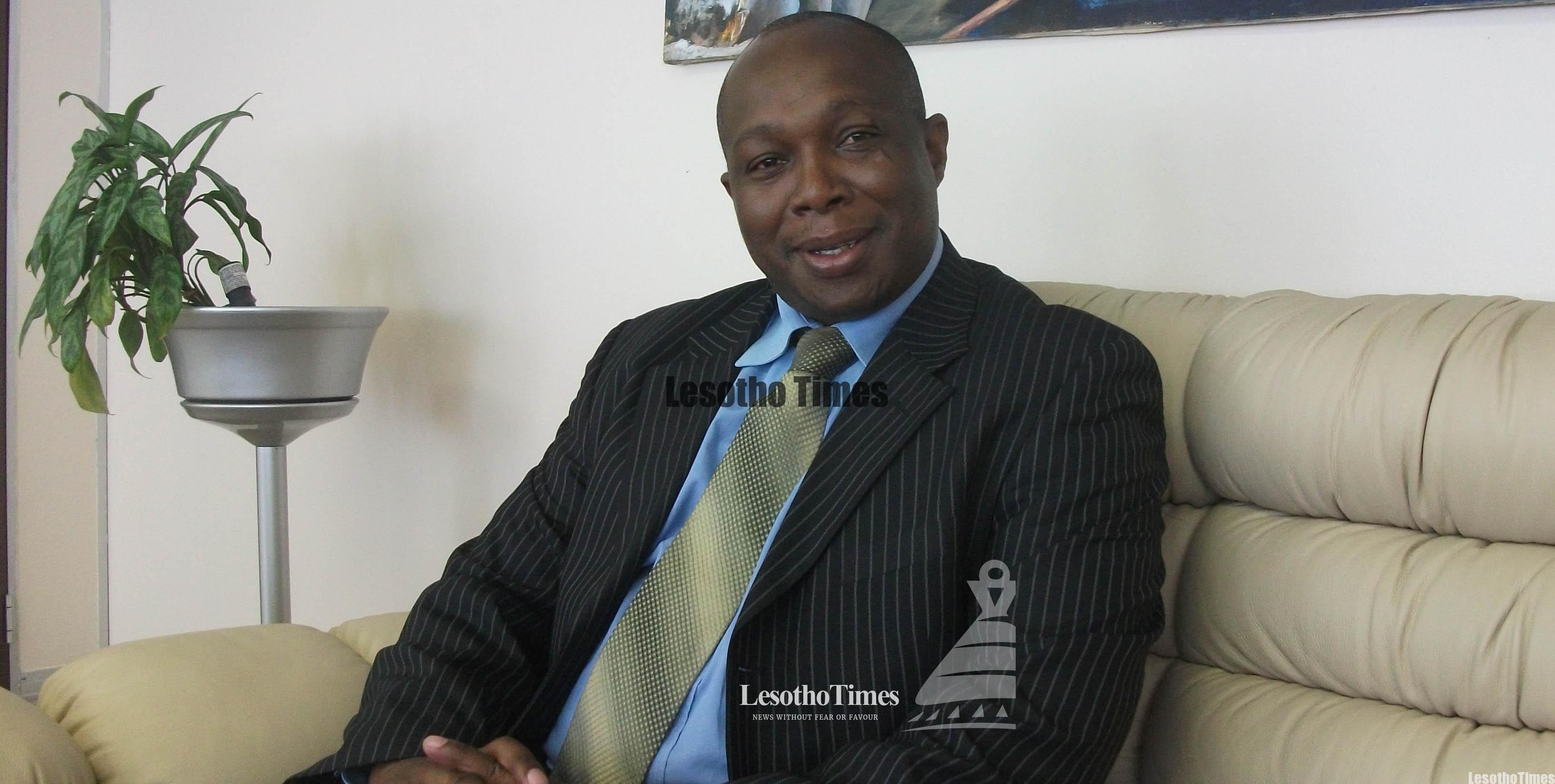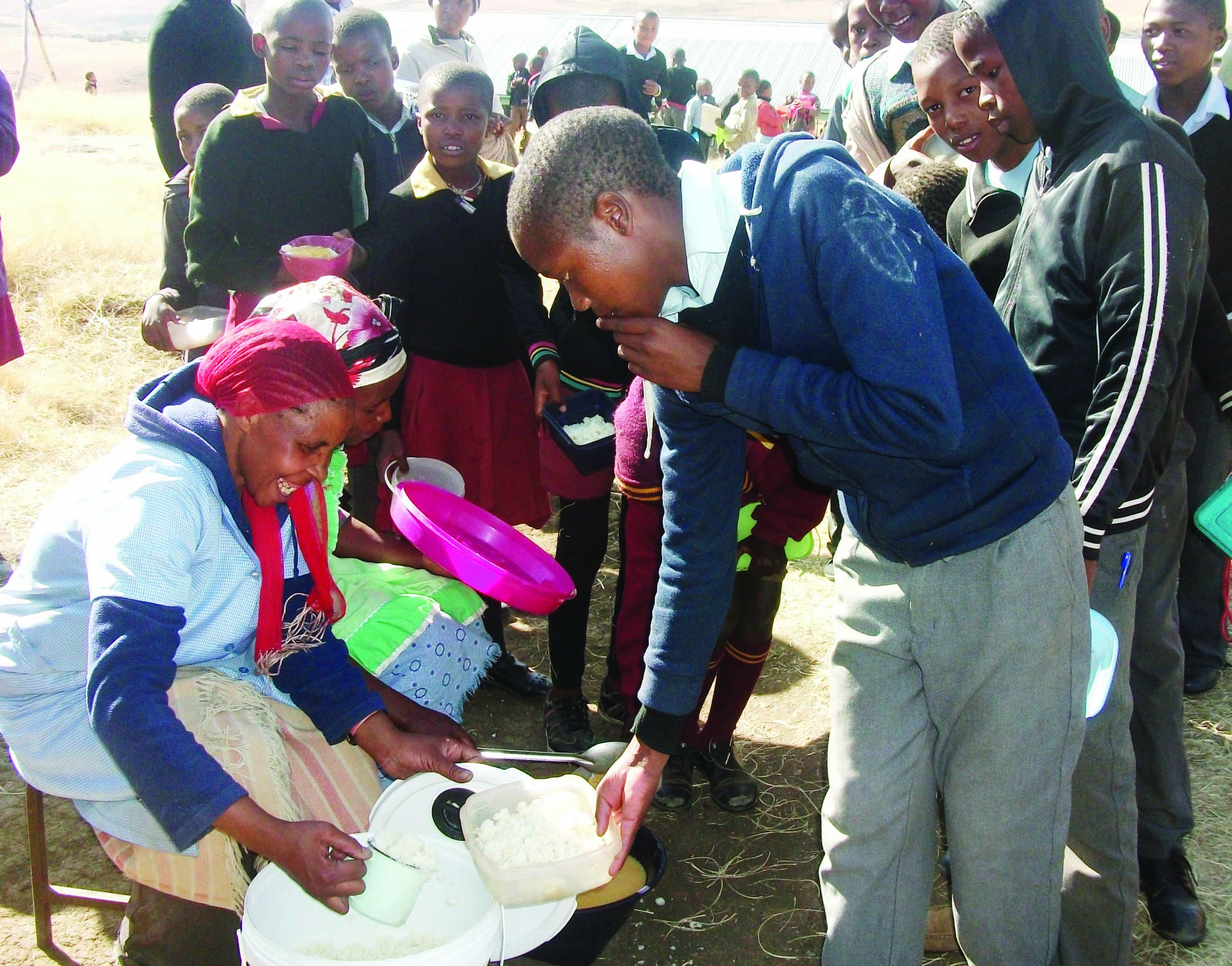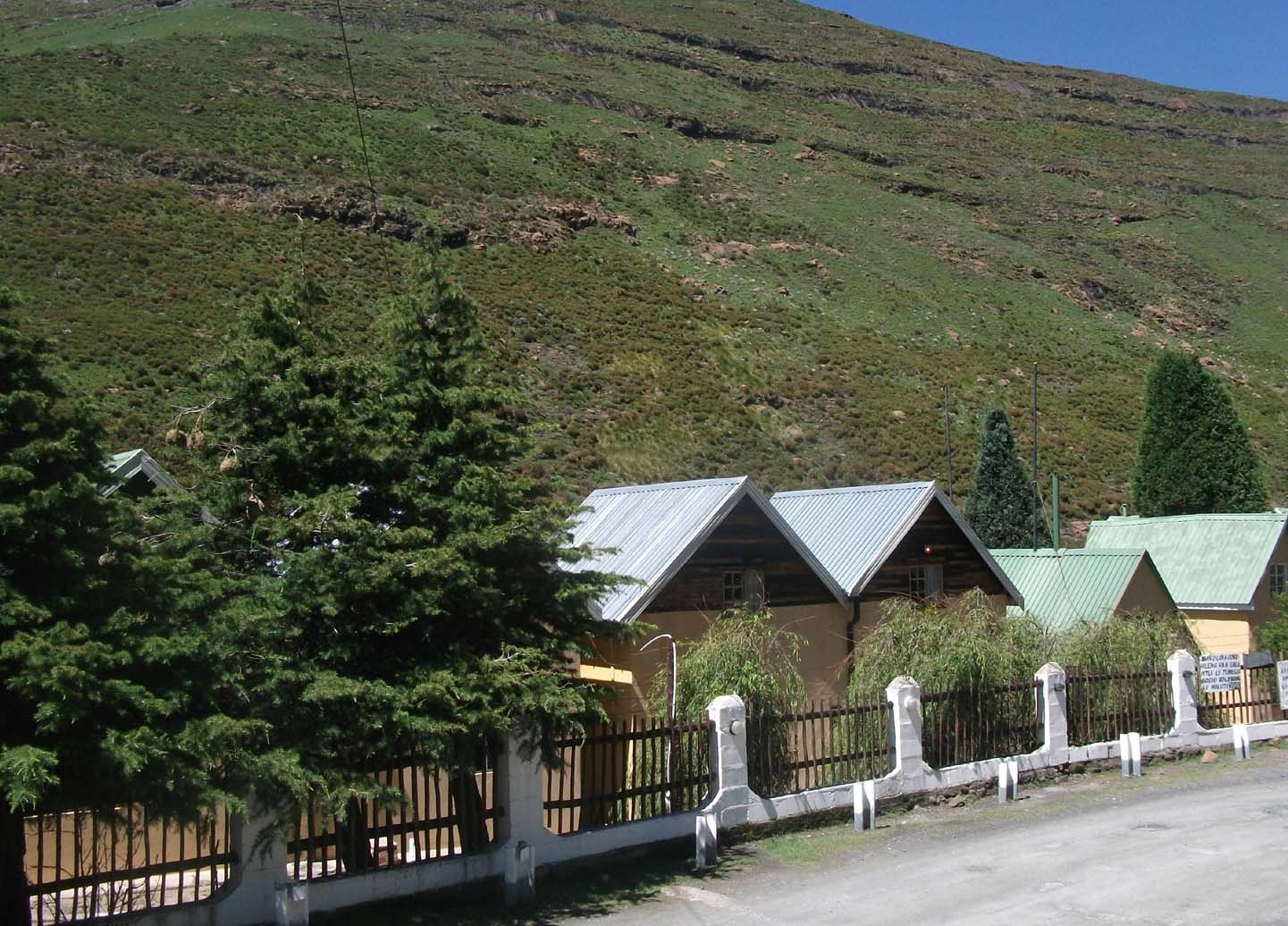
Pascalinah Kabi
THIRTY years after Lesotho and South Africa signed the agreement on the Lesotho Highlands Water Project (LHWP), an atmosphere of gloom and despondency continues to engulf the country with the Youth League Forum of Lesotho (YLF) saying the hoped-for benefits continue to be a pie in the sky.
According to Article 4 (1) of the 1986 Treaty, “the purpose of the project shall be to enhance the use of water of the Senqu/Orange River by storing, regulating, diverting and controlling the flow of Senqu/Orange River and its effluent in order to effect the delivery of specified quantities of the water to the designated outlet point in RSA and by utilizing such delivery system to generate hydro-electric power in the Kingdom of Lesotho.”
With this agreement, South Africa would solve its water needs, importing 70 cubic meters of water per second from Lesotho for its industrial and commercial hub of Johannesburg.
On the other hand, Lesotho would receive much-needed royalties to improve its people’s livelihoods as well as generate electricity by “utilising such delivery system to generate hydro-electric power.”
Sadly not all these benefits, particularly the Phase II hydro-electric power scheme, have materialised amid indications that Lesotho could have slept on the job allowing South Africa to renege on its earlier commitment to purchase 70 cubic metres of water per second after the completion of the two phases of the project.
In terms of the agreement, Lesotho would provide 70 cubic metres of water, with half of this could be achieved under Phase I of the project and the balance being provided after the completion of Phase II which would be undertaken simultaneously with the construction of a hydro-electricity power generation project.
S.A now says it will only require 15 cubic metres- a development which will affect plans to construct the hydro-electricity project as this figure is deemed inadequate to support power generation.
And only now, two years later, is the government taking steps to respond to issues raised in 2014 by the anxious YLF. Back in 2014, the YLF held a meeting with the-then Minister of Energy and Water Affairs Mr Tšeliso Mokhosi and followed this up with a letter questioning Lesotho’s supposed benefits from the LHWP agreement.
This set in motion a chain of events culminating in last week’s decision by the Senate to summon the relevant ministries – energy and water – to respond to questions raised by the YLF. In the 2014 letter written by YLF board member Rabele Makakole to the Clerk to the Senate, several concerns pertaining to the LHWP were raised and he said they needed urgent clarification.
“These concerns are of cardinal importance because they outline the significance and main purpose of the 1986 Treaty on The LHWP between South Africa and Lesotho,” Mr Makakole said.
He suggested that there was a contradiction between Article 4: (1) of the 1986 agreement and Article 8: (2) of a subsequent agreement signed in 2011 which would jeopardise the full implementation of Phase II of the LHWP.
Whereas the 1986 Treaty says that both Lesotho and South Africa must benefit from the project by using the water exported to South Africa to generate electricity, the 2011 Agreement put Lesotho at disadvantage by stating that the electricity can only be generated if both parties agree on the outcome of a joint feasibility study for Phase II of the project.
“The implementation of the Kobong pump storage scheme is subject to agreement on the outcome of a joint feasibility study,” reads Article 8: (2) of the 2011 Agreement.
Mr Makakole also said it was irregular to go ahead with the construction of the dam without a complete feasibility study on the Kobong Pump-storage scheme.
He said the implementation by 1986 Treaty is such that the delivery of water to South Africa and the hydropower generation for Lesotho are mutually inclusive, “meaning that, as a matter of law, no component should go ahead without the other.”
Mr Makakole further claimed in the letter that the-then Minister of Water Affairs, Tšeliso Mokhosi (now Minister of Defense and National Security) said that there was no “Purchase Power Agreement” between South Africa’s ESKOM and Lesotho regarding the purchase of the electricity to be generated at Kobong.
“This means that the government does not have a client for the hydro-power to be generated at Kobong. And this raises the question of the viability of the Kobong Pumped-storage hydropower generation project,” Mr Makakole said.
He also informed Senate that the feasibility studies of the Kobong project were incomplete, stating that “there is no feasibility study on the transmission system, only assumptions.”
Mr Makakole further questioned the affordability of the Kobong Pumped Storage Scheme.
“The government should clearly state the exact amount funding needed for this project and also clearly state where the funding will come from. The estimated costs are M8 335, 5 million and the cost of borrowing is not included in this amount. If money is borrowed, it has to be paid back with interest. The amount of interest to be paid will be determined by the interest rate set by the lender,” reads part of the letter.
Mr Makakole said they believe the cost could exceed the 2014/15 national budget which was pegged at M15.754 billion.
In view of this, Mr Makakole said it was not surprising that the 2011 Agreement of the LHWP Phase II did not appear to have considered the needs of the country.
Mr Makakole also claimed that Lesotho had only three directors on the Lesotho Highlands Development Authority (LHDA) Board compared to South Africa’s five.
“This implies that the five South African directors are a majority that is eligible to make decisions in favour of South Africa over the interests of Lesotho. A review of this protocol is of vital importance and in the best interest of Lesotho,” Mr Makakole said.
Having noted all this, Mr Makakole questioned Lesotho’s decision to go ahead with the sod-turning of the LHWP Phase II project last year in March.
“This (sod-turning) event suggests to the people of Lesotho and South Africa that everything is well and that the project will go ahead as it is. This act may be considered deceptive,” Mr Makakole said.
Minister of Waters Affairs Ralechate ‘Mokose this week held a press briefing to address the YLF’s concerns. The ministry’s Principal Secretary Khomoatsana Tau, Technical Advisor to the Ministry of Water Affairs Masupha Sole and Lesotho representative in the LHWP Tšiu Khatibe all attended.
Mr ‘Mokose said that LHWP was one of the country’s biggest water projects and it has been implemented in stages since the start of Phase I in 1996.
“Phase I A and B were followed by Phase II – a Kobong Project – and this has sparked a lot of interest and people are well within their rights to ask questions,” he said.
He said that there have been achievements that the country needs to build on moving to Phase II.
He also conceded that “there were further challenges that we need to address going into Phase II and one is unable to make improvements without listening to the opinions and concerns of our people,” he said.
He however refuted the YLF’s claims that South Africa had more representatives in the LHDA Board, saying there is equal representation.
For his part, PS Tau said the agreement was signed to meet both countries’ needs.
“The agreement isn’t merely about Lesotho selling water to South Africa. What happened is that when S.A was trying to fight its water problems, it spearheaded two studies – Orange Vaal Transfer Scheme (OVTS) in S.A and the LHWP in Lesotho.
After S.A found that the LHWP would cost much less than the OVTS, the two countries then agreed that the cost difference must be a benefit or savings which the two countries can share,” Mr Tau said.
He said it was then agreed that Lesotho would get a 56 percent benefit in the form of royalties while for S.A, the LHWP represented 44 percent cost savings.
He said that in terms of the agreement, Lesotho would provide 70 cubic meters of water per second to S.A, with half of this being achieved under Phase 1 of the project and the balance being provided after the completion of Phase 2 which would be undertaken simultaneously with the construction of the hydro-electricity power generation project.
“The Phase II feasibility study brought in the Polihali dam – 165 meters. Most important to us Basotho was that Lesotho would have a ‘Muela II – a second hydropower station producing 80MW. We then studied two ways of achieving this, either erecting a tunnel straight from Polihali to ‘Muela or a tunnel from Katse to ‘Muela,” Mr Tau said.
He however said that it was only during negotiations with S.A after completing this feasibility study that Lesotho suffered a big blow when S.A said their water needs had changed, and they only required an additional 15 cubic meters of water per second instead of 35 as envisaged in the agreement.
“Phase II was supposed to pump in 35 cubic meters of water per second but S.A now say they will need only 15 cubic meters, and that is why we are now building a smaller dam at Polihali,” Mr Tau said.
“It was a big blow when S.A went on to say that they will only need the 15 cubic meters 20 years after the construction of this dam and this gave us a headache because the Treaty says we must also use water-delivery system to generate electricity. Since they no longer need 35 cubic meters of water as initially agreed, we had to come up with an alternative which is the Kobong-Pump Storage as part of Phase II. We are now working on the Kobong project.”
Mr Tau said the country would still need to find buyers for the electricity because it was envisaged that the Kobong project would generate far more power than the country’s requirements.
Mr Tau said Kobong project is expected to generate 1200mw, 1000 more than what Lesotho needs.
He said they were a conducting a market study along with an environmental impact assessment, Kobong electricity transmission lines connectivity to (South Africa’s) ESKOM as well as geotechnical investigations.
Technical Advisor to the Ministry of Water Affairs Masupha Sole insisted all was well and the project would go ahead as planned.
“I’m not blowing my own horn but I led the Lesotho team during the negotiations and signing of this Treaty hence my vast knowledge in these issues. Some say that with the Kobong project, the water transferred to S.A will no longer generate electricity but I must state that the Treaty’s Article 4 (1) states that water going into S.A should generate electricity and that hasn’t changed.”
He also dismissed perceptions that Lesotho had always negotiated from a point of vulnerability enabling S.A to take advantage and renege on its obligations in terms of the 1986 treaty without due consideration to the negative impact that could have on Lesotho.
Mr Sole also said S.A had not reneged on the agreement as they had communicated with Lesotho who acceded to their request to reduce their water requirements.
“The treaty is very clear that there will be penalties if one party brings any changes which were not agreed to by the other party. However, in this situation we conceded that their water needs had changed and therefore there are no penalties,” Mr Sole said.
“Let me set the record straight. I don’t want to lose my job. You either didn’t hear me or there was a slip of a tongue, I said I don’t know which of the two countries was sleeping and the PS has explained that Lesotho was not in deep sleep, allowing S.A to renege.”
PS Tau weighed in and said “Lesotho was not in the deep sleep that you think it was in. There was a time we pushed them.”
He however appeared to confirm that S.A had indeed reneged on the agreement when he revealed that the Phase II feasibility study was not carried out by the LHDA as per the agreement because S.A had insisted that it did not need the same amount of water initially stated in the agreement.
“This was called a pre-commitment study where Lesotho paid half of the costs while S.A paid half. After completion, S.A said it needed the water, hence why we are continuing with the Polihali project.”
While the debate about whether Lesotho was sleeping or wide awake all these years continues back and forth, what is clear however, is the fact that S.A’s revised water needs could well impact on the country to reap full benefits from the LHWP.







